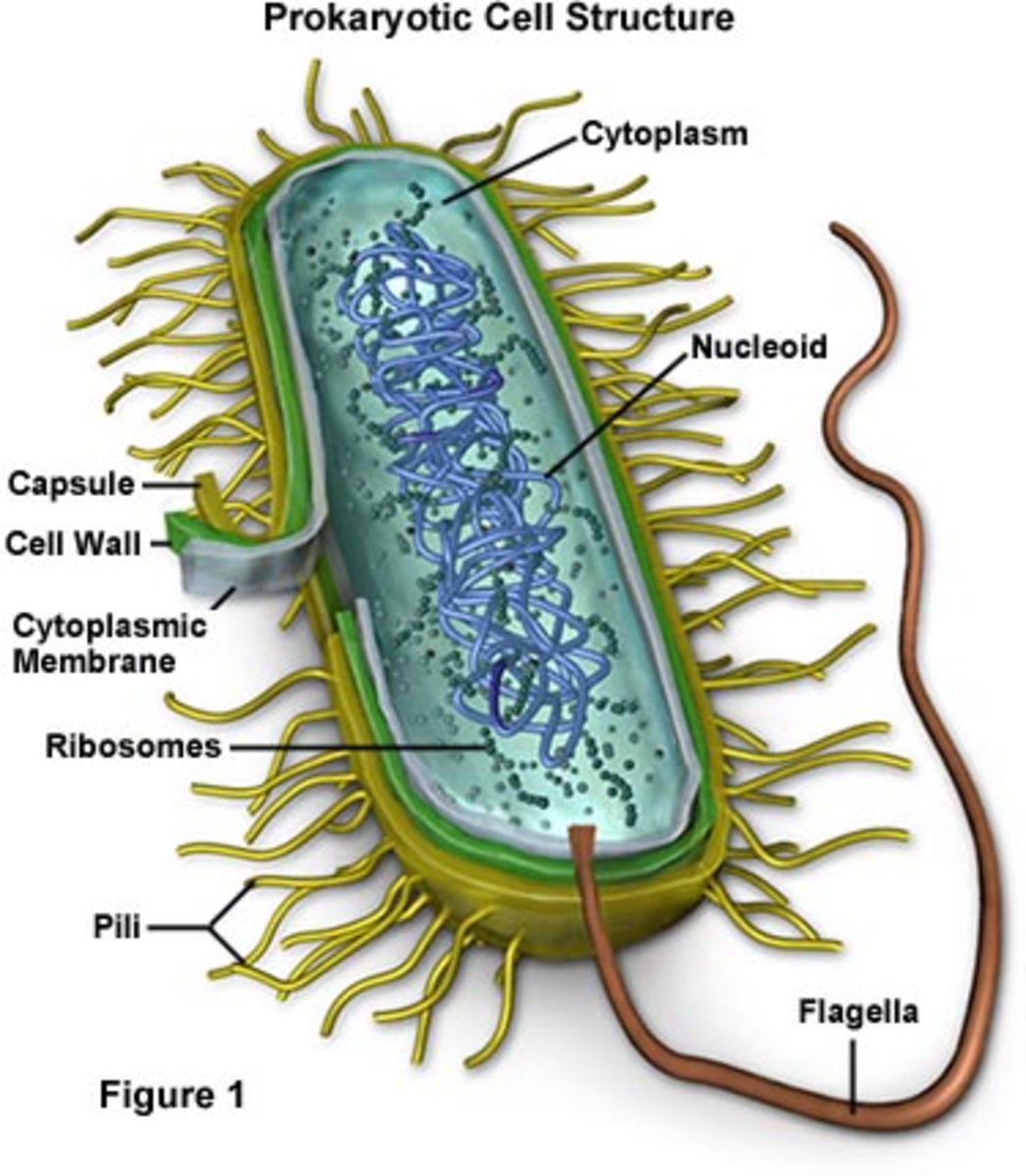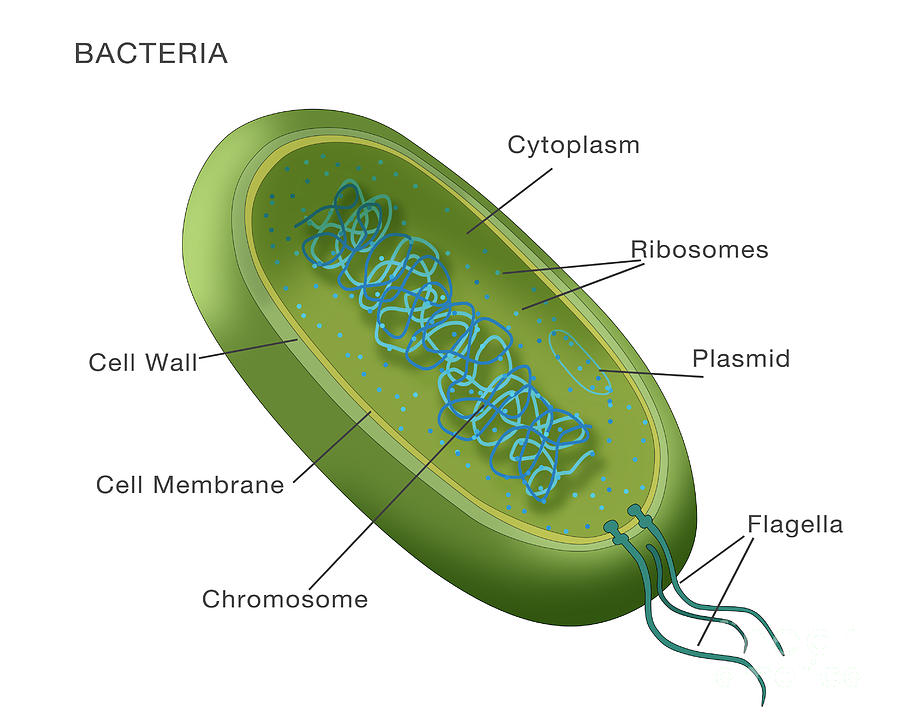
Pin by Magpie on ชีวะ Prokaryotic cell, Eukaryotic cell, Prokaryotic cell model
4 Bacteria: Cell Walls . It is important to note that not all bacteria have a cell wall.Having said that though, it is also important to note that most bacteria (about 90%) have a cell wall and they typically have one of two types: a gram positive cell wall or a gram negative cell wall.. The two different cell wall types can be identified in the lab by a differential stain known as the Gram stain.

Prokaryotic Cell Structure, Characteristics & Function
All bacteria, both pathogenic and saprophytic, are unicellular organisms that reproduce by binary fission. Most bacteria are capable of independent metabolic existence and growth, but species of Chlamydia and Rickettsia are obligately intracellular organisms. Bacterial cells are extremely small and are most conveniently measured in microns (10-6 m). They range in size from large cells such as.

Bacteria Cell Vector Art, Icons, and Graphics for Free Download
3.1 Cell Culture and Labeling. Depending on the goal of experiments, one can label bacteria with FDAA with a long-pulse, short-pulse, or pulse-chase. In long-pulse labeling, incubate dyes with cell cultures for 1-3 cell cycle durations so that the whole bacterial outline can be visualized; for short-pulse labeling, incubate dyes with cells for 5-10% of the cell cycle so that nascent PG.

Structure and Function of Prokaryotic Cells
bacteria, any of a group of microscopic single-celled organisms that live in enormous numbers in almost every environment on Earth, from deep-sea vents to deep below Earth's surface to the digestive tracts of humans. Bacteria lack a membrane-bound nucleus and other internal structures and are therefore ranked among the unicellular life-forms.

Bacterial cell anatomy in flat style. Vector modern illustration. Labeling structures on a
Cell size. Typical prokaryotic cells range from 0.1 to 5.0 micrometers (μm) in diameter and are significantly smaller than eukaryotic cells, which usually have diameters ranging from 10 to 100 μm. The figure below shows the sizes of prokaryotic, bacterial, and eukaryotic, plant and animal, cells as well as other molecules and organisms on a.

Learn About Prokaryotic Cells, Prokaryotes Bacteria and Archaeans Prokaryotic cell
Prokaryotes, like bacteria are summarized in Chapter 8. Students learn the difference between prokaryote and eukaryote cells. They learn the basic parts of all cells: membrane, DNA, cytoplasm. You can copy and edit my Google Slides for Chapter 8. Chapter 21 covers bacteria with more details, including the topic with viruses, protists, and fungi.

Bacterial Intracellular Structures That Give Bacteria/Prokaryotes an Advanatage! HubPages
In gram-negative bacteria, the cell wall is thin and releases the dye readily when washed with an alcohol or acetone solution. Cytoplasm - The cytoplasm, or protoplasm, of bacterial cells is where the functions for cell growth, metabolism, and replication are carried out. It is a gel-like matrix composed of water, enzymes, nutrients, wastes.

Cellular Structure of Bacteria ZeroInfections
Bacterial cells have simpler internal structures like Pilus (plural Pili), Cytoplasm, Ribosomes, Capsule, Cell Wall, Plasma membrane, Plasmid, Nucleoid, Flagellum, etc. Labeled Bacteria diagram. Eukaryotes have been shown to be more recently evolved than prokaryotic microorganisms. Eukaryotic cells, which make up higher organisms, evolved from.

Types Of Bacterial Cells
1.11: Prokaryotic Cells. Distinguish between prokaryotic cells and eukaryotic cells in terms of structure, size, and the types of organisms that have these cell types. Identify structures of bacterial cells in models and diagrams, including details of Gram-positive and Gram-negative cell walls and flagella.

Bacterial Cell Structure and Function
Bacterial cells were once presumed to be 'bags of enzymes' with minimal oganization 1. Yet, in the past 10 years, numerous studies have demonstrated that bacteria compartmentalize many.

What Is Bacteria? Good vs. Bad, Benefits, and Common Types
Bacterial cell have simpler internal structure. It lacks all membrane bound cell organelles such as mitochondria, lysosome, golgi, endoplasmic reticulum, chloroplast, peroxisome, glyoxysome, and true vacuole. Bacteria also lacks true membrane bound nucleus and nucleolus. The bacterial nucleus is known as nucleoid.

Bacterial Structure Plantlet
Cell wall: It is a tough and rigid structure of peptidoglycan with accessory specific materials (e.g. LPS, teichoic acid etc.) surrounding the bacterium like a shell and lies external to the cytoplasmic membrane. It is 10-25 nm in thickness. It gives shape to the cell. Nucleus: The single circular double-stranded chromosome is the bacterial genome.

Bacterial Cell Structure and Function
Cell wall The structure of peptidoglycan. The cell envelope is composed of the cell membrane and the cell wall.As in other organisms, the bacterial cell wall provides structural integrity to the cell. In prokaryotes, the primary function of the cell wall is to protect the cell from internal turgor pressure caused by the much higher concentrations of proteins, and other molecules inside the.

Bacteria Diagram Photograph by Monica Schroeder
The structure of bacteria is known for its simple body design. Bacteria are single-celled microorganisms with the absence of the nucleus and other c ell organelles; hence, they are classified as prokaryotic organisms. They are also very versatile organisms, surviving in extremely inhospitable conditions. Such organisms are called extremophiles.

Natural Science 1 & 2, BiologyGeology 3 BACTERIAL CELL
In this article we will discuss about the cell structure of bacteria with the help of diagrams. A bacterial cell (Fig. 2.5) shows a typical prokaryotic structure. The cytoplasm is enclosed by three layers, the outermost slime or capsule, the middle cell wall and inner cell membrane. The major cytoplasmic contents are nucleoid, plasmid, ribosome.

prokaryotic cell bacteria parts
Figure 1. Cutaway drawing of a typical bacterial cell illustrating structural components. See Table 2 below for chemical composition and function of the labeled components. Table 2. Summary of characteristics of typical bacterial cell structures. Structure. Flagella. Function (s) Swimming movement.